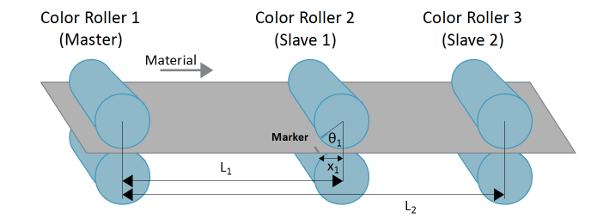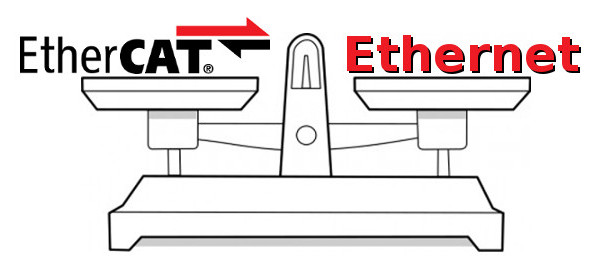Below are a list of technical White Papers written by Galil Applications Engineers.
[White Paper] Advanced Applications of Electronic Gearing Part 2
Part 2 of 3: Positional Correction on Color Print Rollers in Offset Printing
Introduction
This is the second of three advanced electronic gearing topics discussed in this series of papers. The first paper covered tension control on a spindle, while the third will cover writing on a moving conveyor system. To view Part 1 click HERE.
Definition
This topic covers positional corrections of geared color print rollers on a web style, offset printing machine. Figure 1 shows material being pulled through three printing rollers, each a different color. The second and third rollers are geared to the first with a 1:1 ratio. Each roller must be properly aligned so that as the material is pulled through, the printed colors line up. In a perfect world, this can be calculated knowing the distance in-between rollers and the radius of the rollers.
Figure 1: Web printing diagram
[White Paper] Compensating For External Forces in Motion Control Applications
When an external force is applied to a system, standard PID parameters may not be sufficient to compensate for it. To better understand how to address this problem, four applications with external forces will be analyzed and an effective solution will be provided for each application. These applications include servo motors moving a vertical load, a spring load, a lever arm, and a compressible substance.

[White Paper] Advanced Applications of Electronic Gearing Part 1
Part 1 of 3: Tension Control on Spindle Wheel
Introduction
Electronic gearing in motion control allows for a slave axis to follow a master axis with a programatically set gear ratio. There are certain applications that obviously lend to an electronic gearing solution, but there are some challenging applications where the functionality of electronic gearing can greatly simplify a solution in a manner that may not seem obvious at first. This series of three papers will discuss how electronic gearing can provide simple solutions to different motion control challenges. The second and third installments will provide solutions to the problems of making precision adjustments for a cutting axis on a high-speed material feed, and image drawing or writing on a moving conveyor system.



